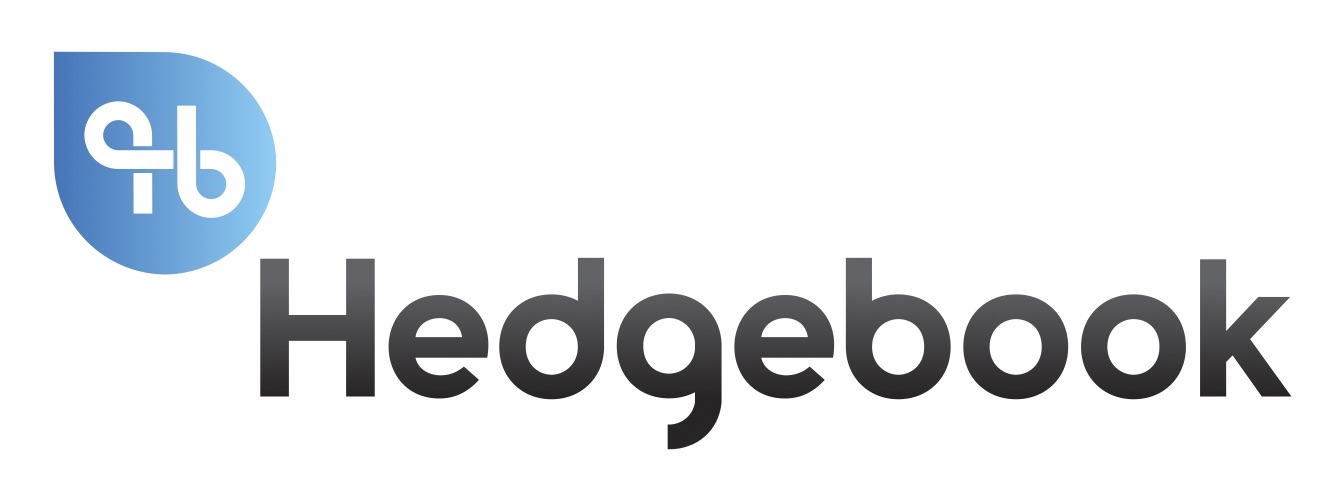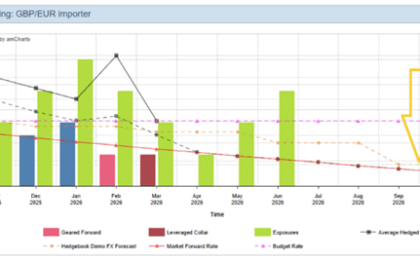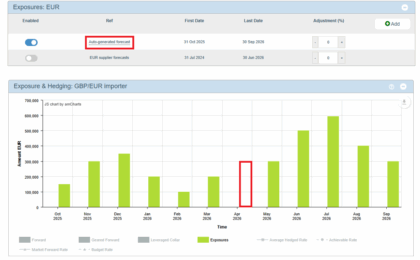A Target Redemption Forward (TARF) is a type of structured foreign exchange (FX) derivative that allows a corporate to trade one currency for another at an enhanced rate (better than a regular forward) for a series of expiry dates – with no upfront premium. The product automatically terminates (‘knocks out’) once the accumulated profit reaches a defined target level.
Understanding how a TARF works in a bit more detail
A TARF gives the holder access to a more attractive strike rate than would be available under a standard forward. It is structured as a series of settlement dates – often monthly – where gains accumulate as long as market movements are favourable.
Once the pre-agreed profit target is reached, the product automatically terminates, closing out the remaining trades. If the market moves unfavourably, however, the holder remains obliged to transact at the agreed strike rate for the duration of the structure. As experts note, only positive pay-offs count toward the redemption level, making TARFs a highly path-dependent product.
When are TARFs typically deployed?
You are typically drawn to TARFs because you can secure an exchange rate that is more favourable than a plain forward. This enhanced rate can provide meaningful benefits when managing recurring exposures – particularly in markets where margins are thin.
The flexibility of TARFs is another attraction. As over-the-counter (OTC) products, they can be tailored in terms of notional amounts, strike levels, profit targets, and settlement frequency.
For treasurers looking for targeted returns, TARFs can be particularly useful in sideways markets where exchange rate movements are limited, allowing the structure to deliver improved outcomes relative to traditional forwards.
Risks and issues to be aware of in using TARFs
While TARFs offer advantages, they also introduce a higher level of risk. One of the most important considerations is the asymmetry of pay-offs: upside is capped by the redemption target, but downside exposure is potentially unlimited.
You could find yourself locked into unfavourable trades for the entire term of the product, particularly if the exchange rate moves against them early in the structure.
TARFs are also inherently complex. Their path-dependent nature means pricing and risk monitoring require sophisticated models such as Monte Carlo simulation or local volatility frameworks.
This complexity has contributed to historical mis-selling scandals, where products were marketed to corporates without sufficient understanding of the risks involved. UBS and other banks have paid significant fines for mis-selling TARFs to smaller firms, underlining the regulatory scrutiny that now surrounds these instruments.
Another issue is forced continuation
If the redemption target is not achieved, the holder is obliged to continue transacting at the fixed strike rate, even if this is significantly worse than the prevailing market.
Conversely, if the target is reached too quickly, future exposures may be left unhedged, exposing the business to new risks at precisely the wrong moment. These dynamics make TARFs unsuitable for corporates that prioritise certainty of coverage.
They are better suited to companies with the ability to monitor accruals, manage governance processes, and act quickly if circumstances change. Hedgebook is an ideal tool to use for this.
Compliance and accounting considerations
As OTC derivatives, TARFs are subject to reporting requirements under regimes such as EMIR in Europe or equivalent regulations in the APAC region. Some may also be subject to clearing obligations, depending on the jurisdiction and counterparty.
Regulators and banks emphasise that TARFs fall into high-risk categories, and Key Information Documents warn that losses can exceed the initial notional – something companies must make clear in governance disclosures.
From an accounting perspective, TARFs pose challenges under IFRS 9. Their structured, path-dependent design can make it difficult to demonstrate hedge effectiveness, particularly compared to simpler forwards or options. Companies must ensure their documentation and testing processes are rigorous enough to satisfy both internal and external auditors.
Do TARFs make sense for the average corporate?
TARFs can offer you access to enhanced exchange rates and cost efficiencies and are flexible enough to be structured to meet specific treasury objectives. However, these advantages come with significant caveats. The capped upside, unlimited downside, and complexity of the product mean TARFs should only be used by companies with strong governance and risk management frameworks in place.
In short, TARFs can play a role in a broader hedging strategy, but they are not suitable for every company. They demand discipline, oversight, and a clear understanding of how they will perform in both favourable and unfavourable market conditions.
Which is where Hedgebook has a strong role to play. Our FX Exposure Tool gives you the insight you need to effectively manage TARFs. We provide a detailed view of how this works in our Quick Guide (just scroll down the Hedgebook dashboard and FX help section to find the TARFs tab).
If you would like to take a closer look – please just reach out to our team and we will run you through how Hedgebook effectively manages TARFs and any other FX derivative you may need to manage.





